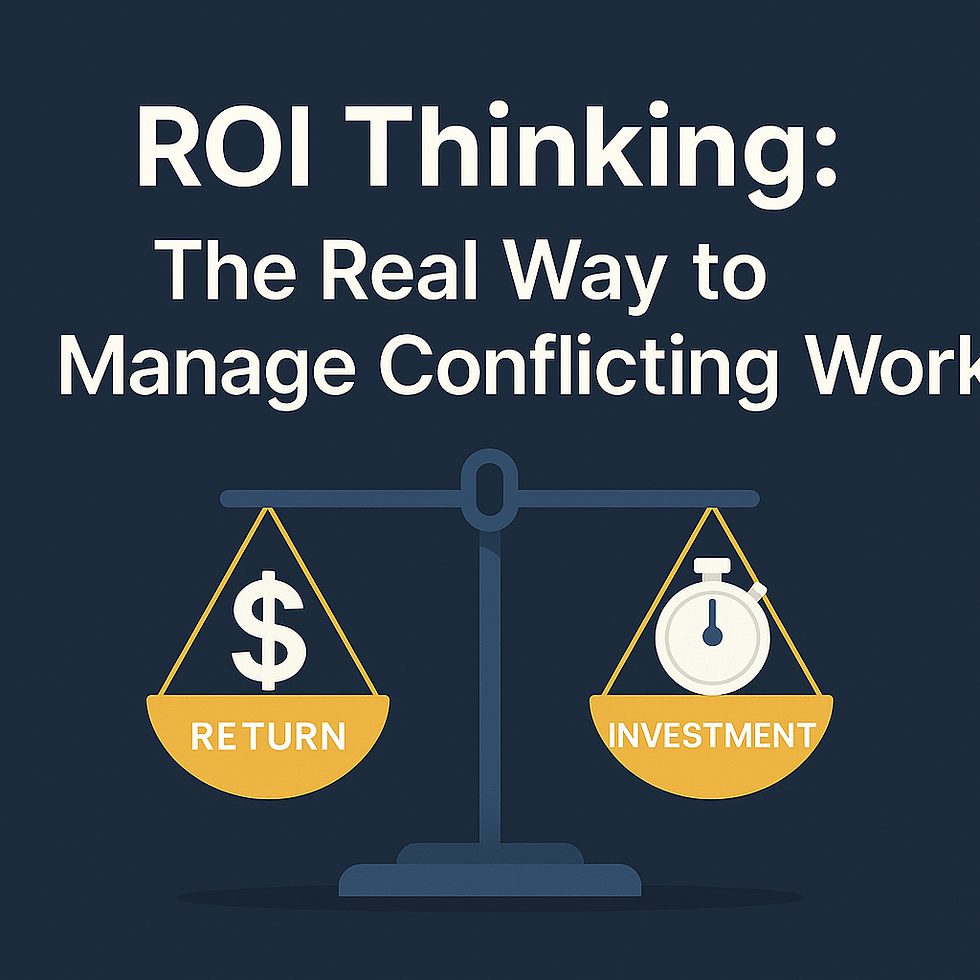Engineering Management Is Resource Orchestration — Not Just People Management
- Admin
- Apr 27
- 4 min read
Updated: May 12

We often hear, “An engineering manager is not just a people manager.” But what does that actually mean? If we strip away the clichés, what is it that engineering managers really manage?
It’s not tasks. It’s not process. It’s not meetings.
At its core, engineering management is resource orchestration.
That’s the real job under the surface.
Because solving business problems at scale isn’t about being the smartest person in the room — it’s about assembling, activating, and evolving the right combination of resources: people, technologies, tools, cost structures, and now increasingly, digital agents.
The Engineering Manager’s Toolkit: A Resource Composition View
Let’s pause and look at the big picture.
Forget the Jira boards. Forget the meeting rhythms. Zoom out and ask: What are the resources that an engineering manager actually manages to solve business problems?
Here’s the composition that exists in nearly every engineering org today:
Resource Type | What It Represents | Share (Today) |
Human Talent | Engineers, tech leads, QA who are the primary problem solvers and collaborators | 50% |
Technology Stack | Languages, frameworks, architectures, platforms | 15% |
Tools & Systems | DevOps, CI/CD, issue trackers, observability, AI copilots | 10% |
Digital Agents & Automation | Bots, scripts, LLM-based agents that execute repeatable tasks | 5% (growing fast) |
Cost/Budget | The financial container that governs team size, tooling choices, and timelines | 20% |
This is not about activities. This is about leverage.
The business problem stays constant — deliver value, ship outcomes — but the composition of how that’s done keeps changing.
And that’s why engineering management is a moving target. You’re constantly rebalancing:
What can be done by people
What should be done by machines and system improvement
What’s worth investing in
What needs to evolve before the next phase
People: The Primary Resource (For Now)
Today, people are still the center of everything.
They design. They build. They debug. They collaborate. They reason about ambiguity. So it makes sense that 50% of your leverage as an Engineering Manager still lies in how you shape, grow, and activate your team.
But it doesn’t stop at staffing. You need to:
Rotate people into more complex challenges as the business evolves
Upskill continuously, because the problems keep changing
Promote selectively, not for tenure, but for impact-readiness
Nurture leadership, so momentum isn’t dependent on one node
You’re not just solving problems with people — you’re solving through them, and for them, and ultimately, scaling them.
Technology and Tools: Where Decisions Compound
People use tech. People use tools. But which ones they use — and how well they match the people’s abilities — determines speed, maintainability, and happiness.
Technology stack decisions are long-term bets.Tooling decisions are operational accelerators.
You, as a manager, might not write the implementation, but you’re responsible for whether the team is slowed down by poor tech or supercharged by good infra.
The stack is where talent meets leverage. And tools are where engineering experience lives day to day.
As a side note, I want to pick leverage in the financial sense , which means borrowing something in expectation that its return on investment outweighs the interest paid. Take for example Salesforce CRM , whose licensing costs could get expensive but if you leverage it is best investment.
Digital Agents: A Small Slice With a Fast Climb
Right now, automation and AI-based agents may handle 5–10% of the total workflow in most teams:
Classifying tickets
Generating boilerplate code
Running health checks
Assisting with queries and docs
But we’re entering an era where some tasks won’t need human intervention at all.
A bot might run your QA suite
An agent might handle release notes
A script might triage low-severity bugs faster than a junior dev
These aren’t sidekicks anymore.They’re emerging as first-class workers, and their share of your resource pool is growing.
Which means as an engineering manager, you’ll not only manage people — you’ll also orchestrate agents.
You’ll ask:
Where do I need human creativity?
Where do I need machine consistency?
And where can I combine both?
Cost: The Invisible Constraint That Shapes Everything
You don’t manage “cost” like you manage people. But cost defines the boundary of all your decisions.
Your headcount is capped. Your infra budget is fixed. Your licensing costs are tracked. Your delivery timelines are budget-bound.
Cost isn’t a resource you deploy — it’s a constraint you optimize within.
This is why engineering management is not just about speed — it’s about sustainable throughput within real-world limits.
And the smartest managers don’t just accept the cost structure — they reshape their team compositions to deliver more, better, faster.
The Big Shift: Orchestration > Ownership
Here’s what all this points to:
The role of an engineering manager is shifting —from owning delivery, to orchestrating outcomes across evolving resources.
People are still key — but they’re not always the bottleneck.
Tools and platforms can be reshaped faster than org charts.
Agents are emerging — and they don’t get tired or promoted.
Budgets are tight — and every investment needs justification.
The manager of the future isn’t just a people nurturer. They’re not just a roadmap enabler. They’re a resource architect — one who understands how to mix and match evolving units of work to solve the right business problems at the right cost.
The Takeaway
In a world where both people and machines can write code, where both humans and agents can respond to tickets, and where both creativity and automation have a place —
The job of engineering management becomes the art of composition.
It’s about knowing how to assemble the best system — of talent, tools, cost, and capability — to deliver business outcomes.



Comments